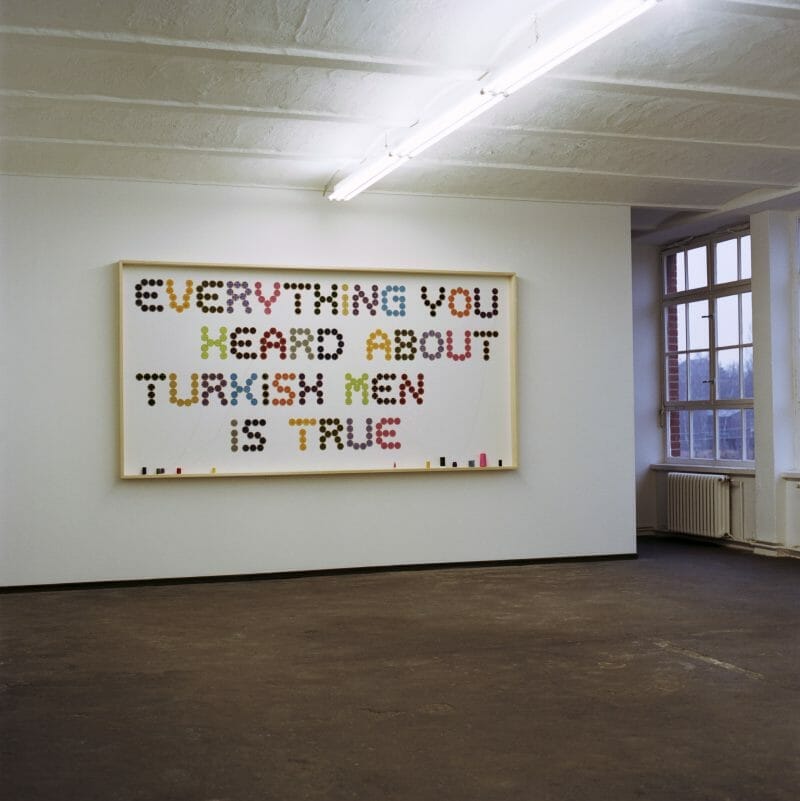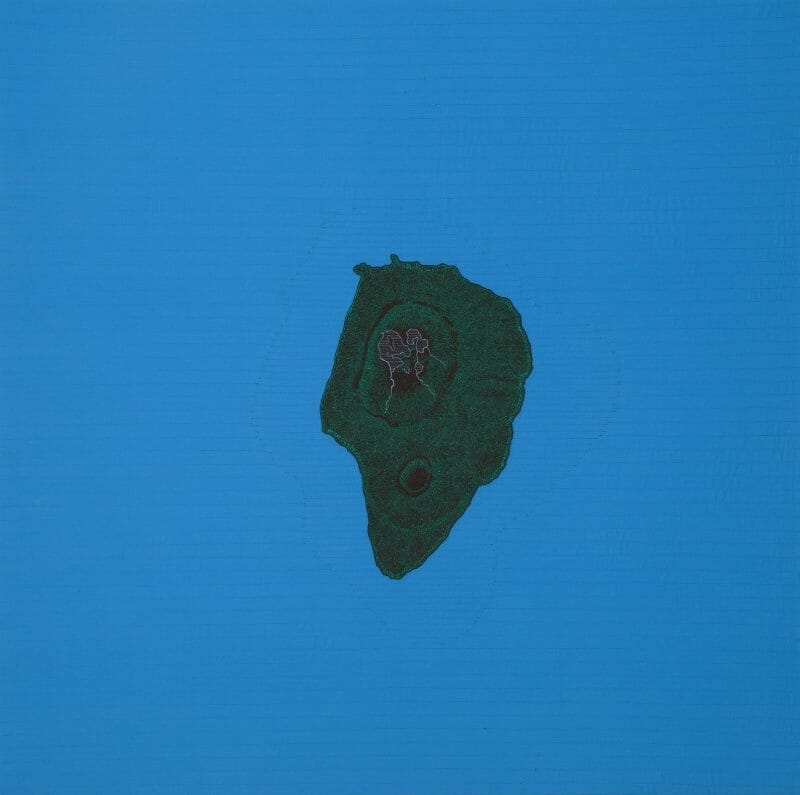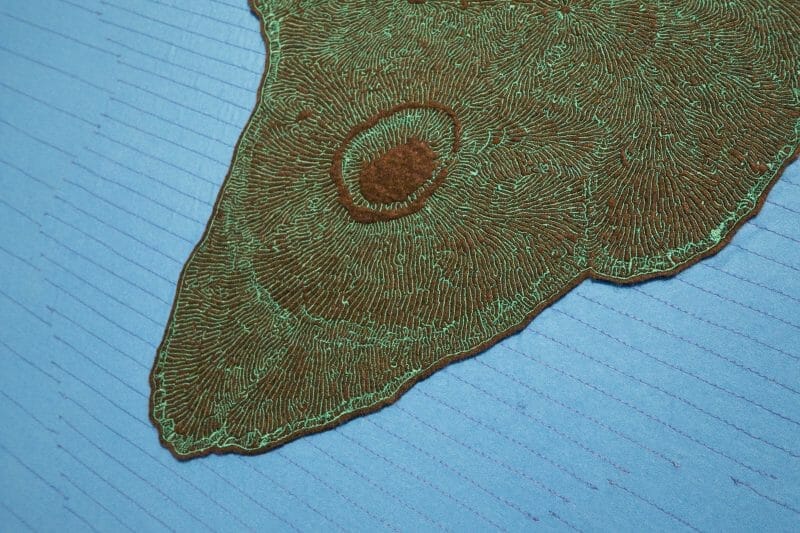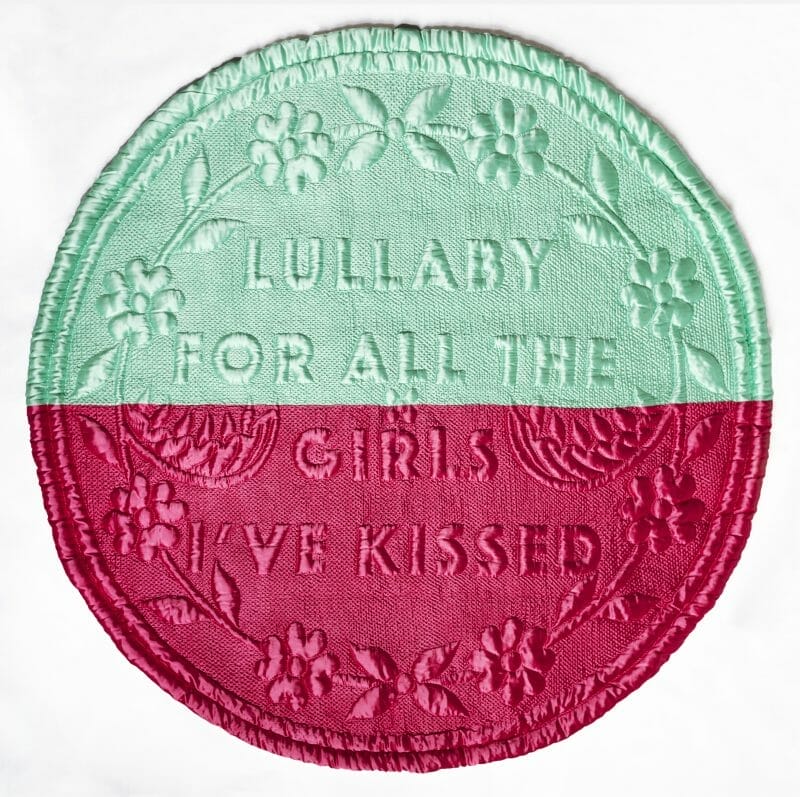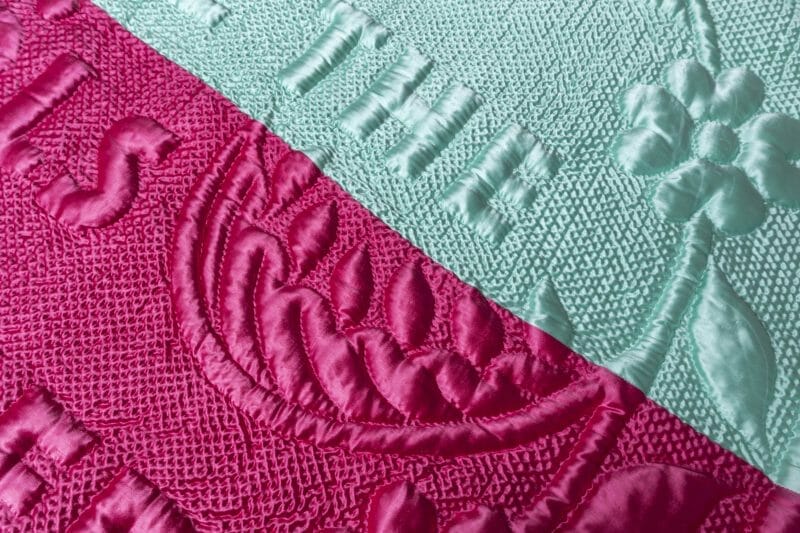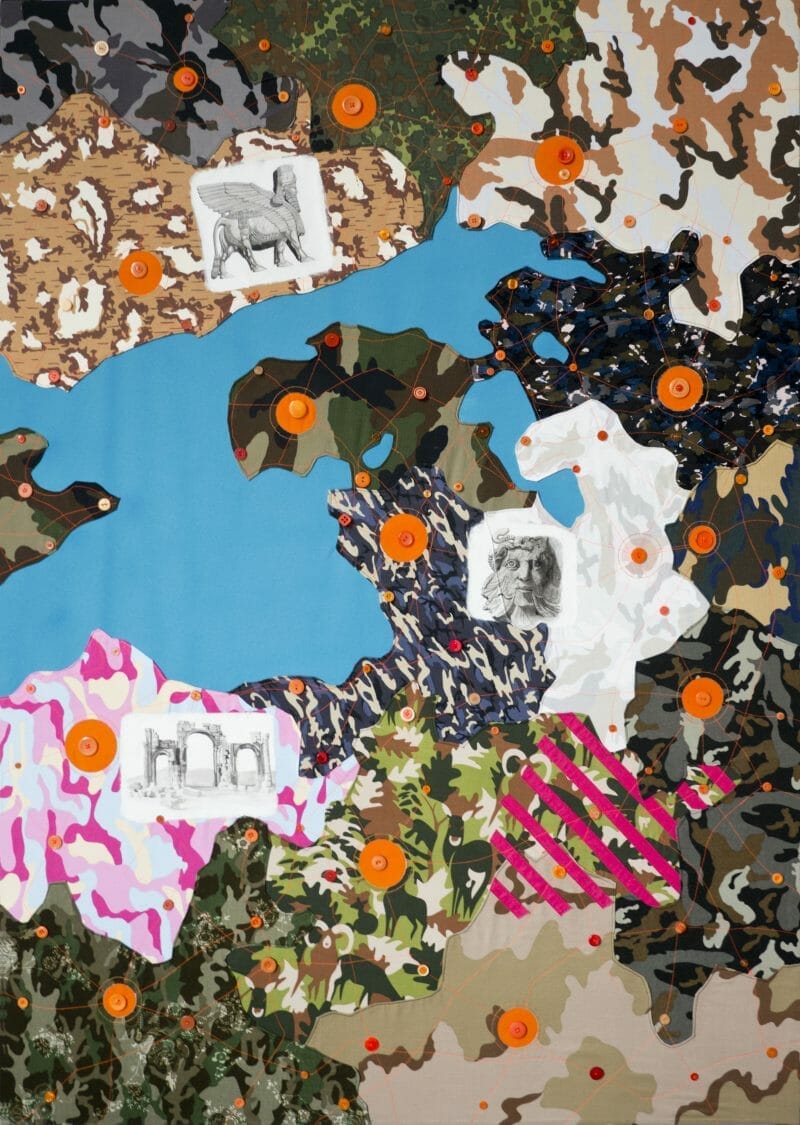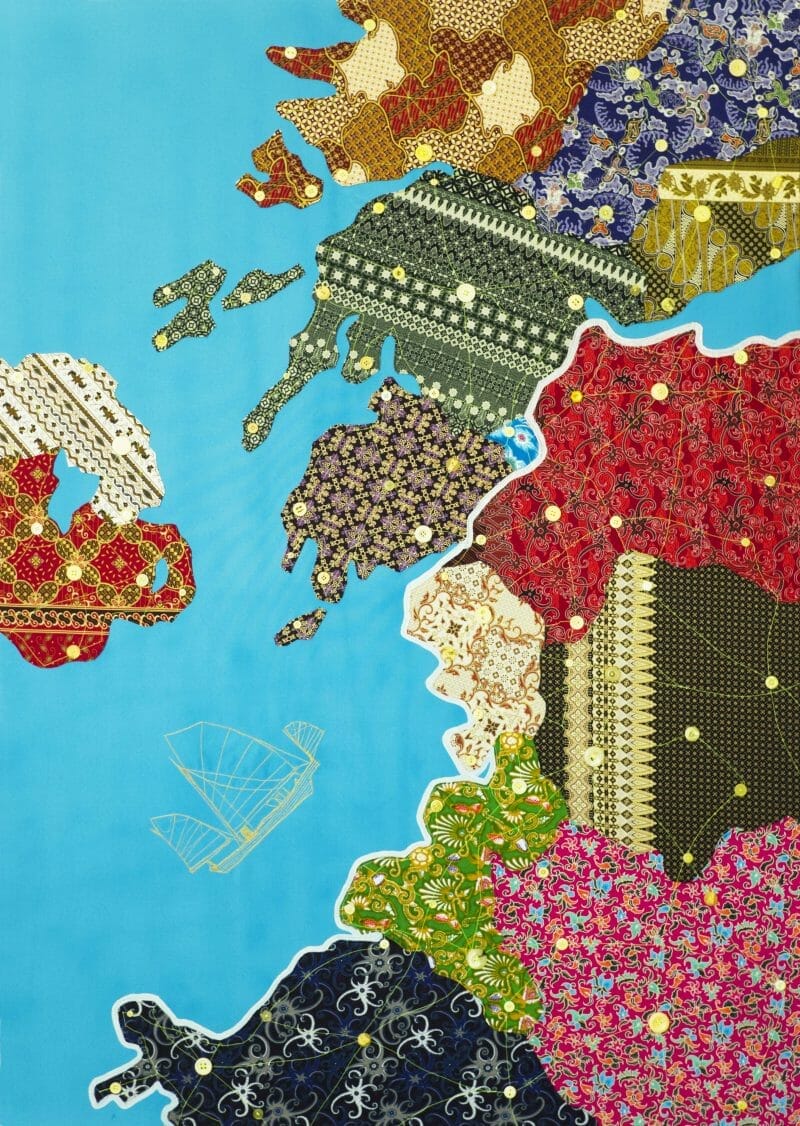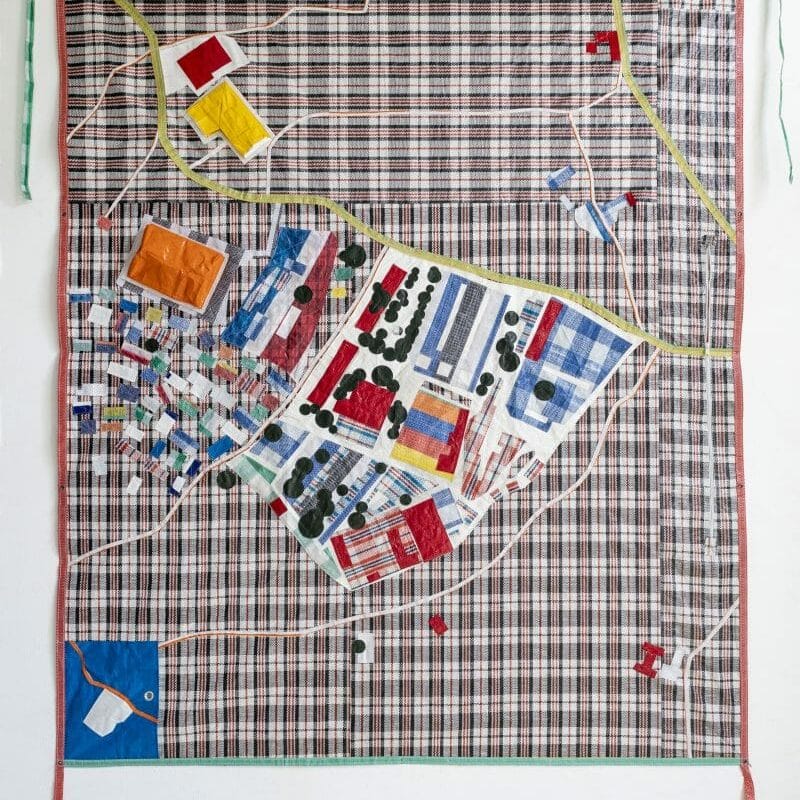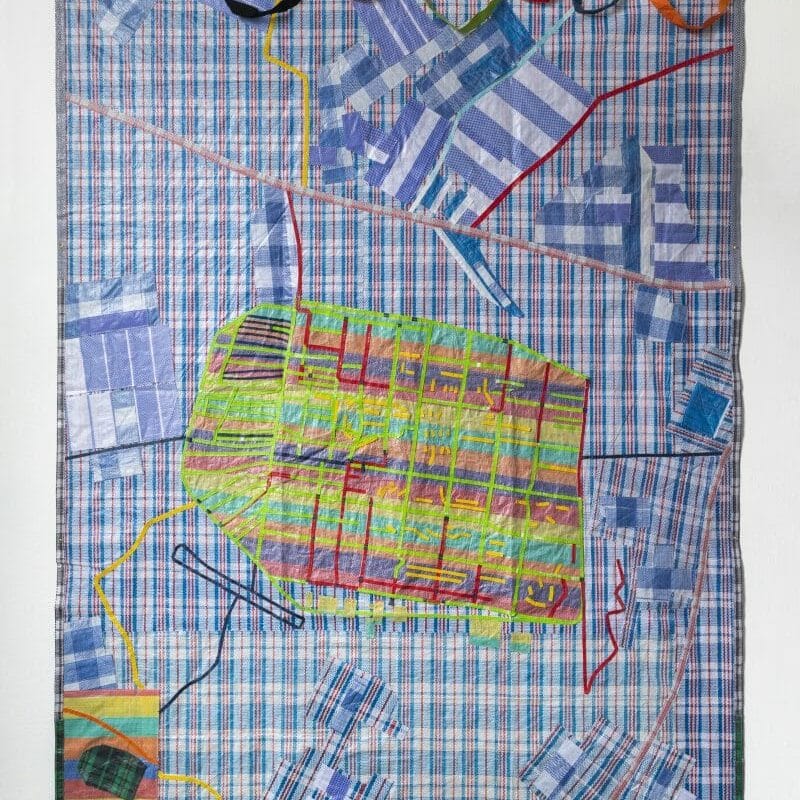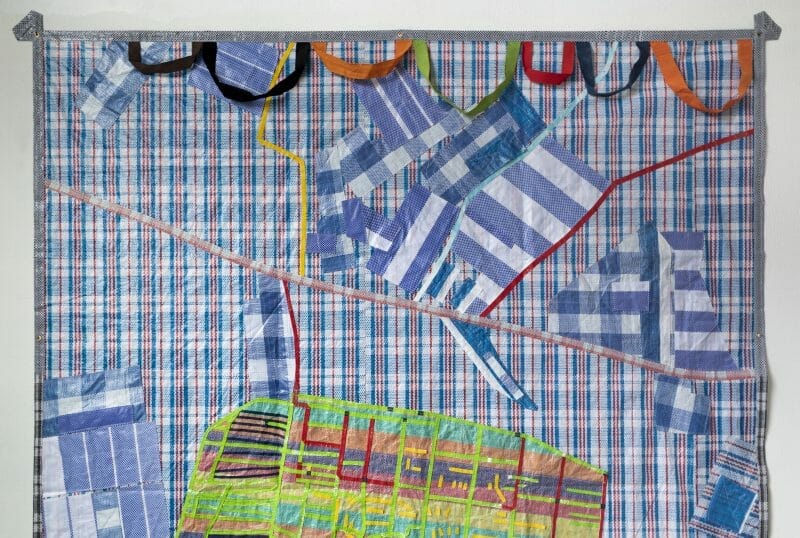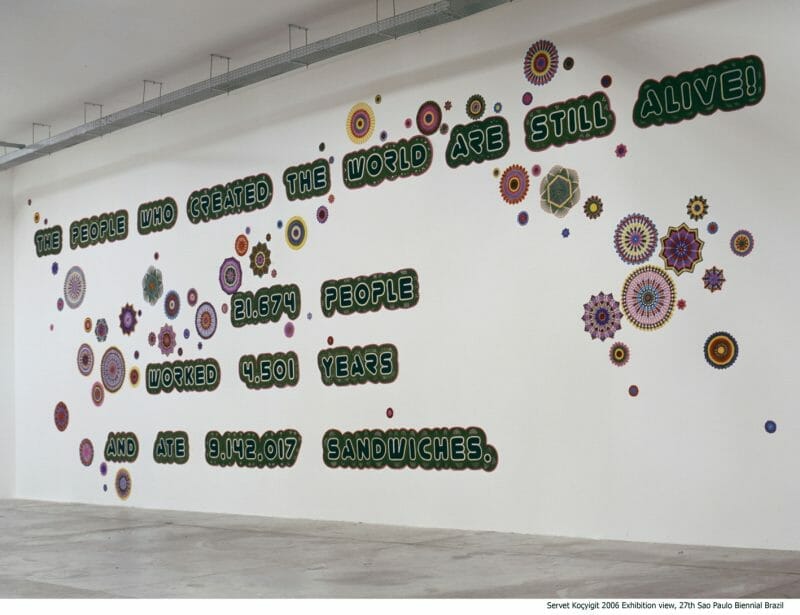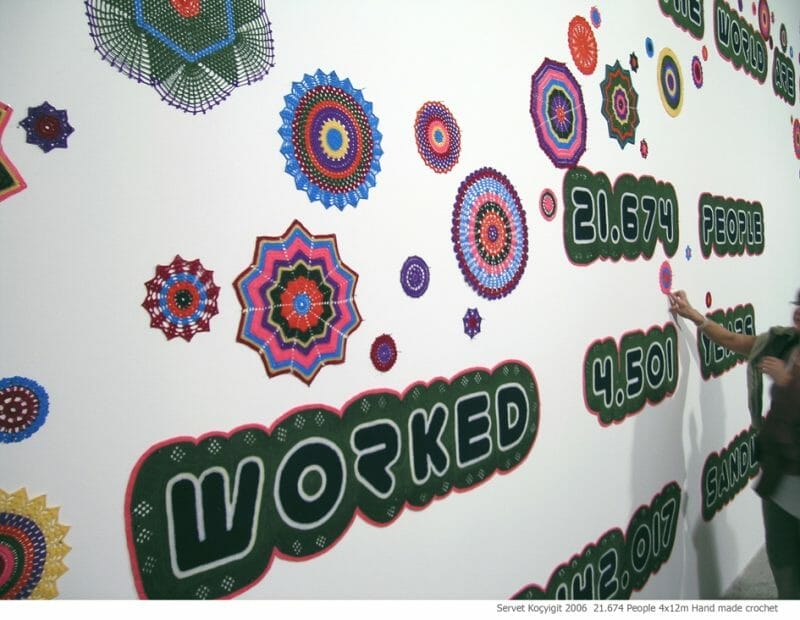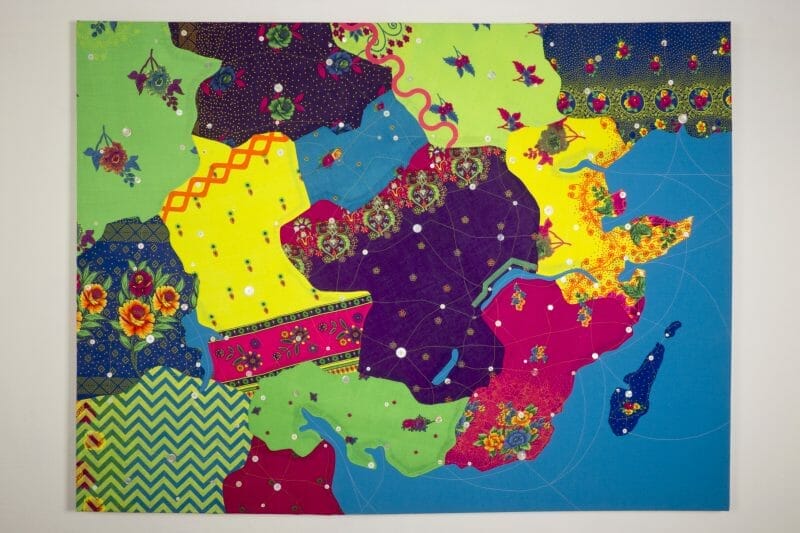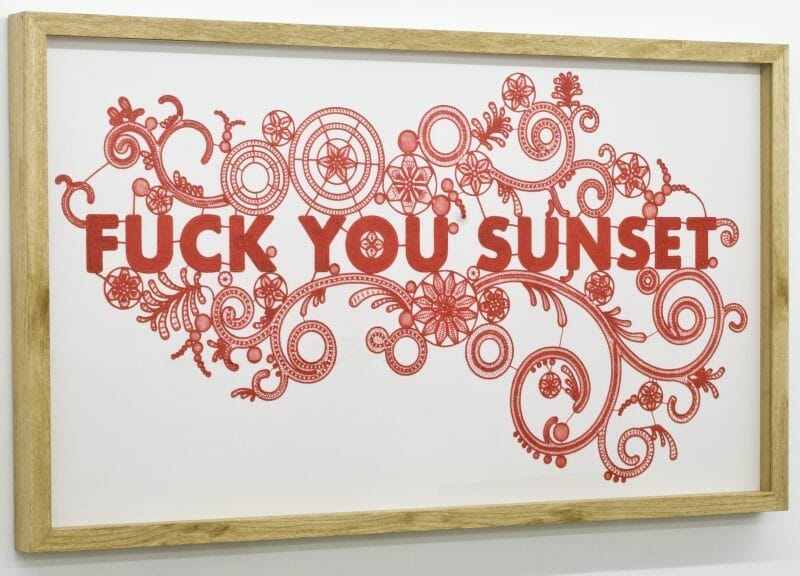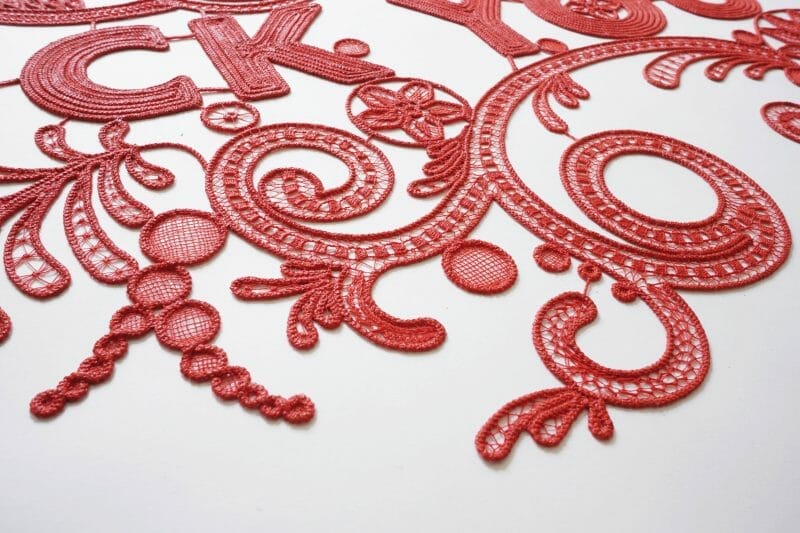Servet Koçyiğit
*Featured photo: Soft Landing, exhibition view Istanbul Modern 2020, 420x360cm (four parts each 210x180cm). Silk Embroidery on satin quilt, Photo Credit Istanbul Modern Museum
Servet Kocyigit, born in 1971, is an artist who is originally from Kaman, Turkey, and who trained at the Gerrit Rietveld Academy in Amsterdam. He currently lives and works in Amsterdam.
Kocygit’s works have been shown in numerous group and solo exhibitions in Brazil, China, France, Germany, Italy, Poland, Israel, the Netherlands and Turkey, among others. Important awards have been bestowed on his work, such as the ‘Shpilman International Prize for Excellence in Photography 2016’ and ‘The New Best Photographer of the Year’, Lianzhou Foto Festival China (2012).
For about a decade, Kocygit’s work has focused on the concept of mapping and through his works, he explores and documents its many aspects.
Through his textile maps, starting with works such as “This is my island“, up to the most recent series “Mapping Refugee Camps“, the artist questions the ways in which current geographies are created and reflects on the gap between the way we represent the world and the real world.
Textiles, imbued with identity, memory and history, represent different cultures and how they evolve and change over time, and are an integral part of his artistic practice, contributing to the creation of those imaginary geographies with which to redraw and redefine notions of belonging, identity and borders.
How did you approach art and what is your background in education?
I actually come from a very different background, from engineering. Engineering was a more realistic choice when I was very young. But I was also a very creative kid and I always wanted to study something more creative, like cinema. By mere coincidence, I ended up at the Gerrit Rietveld Academie in Amsterdam. I was really blown away by how open-minded they were. How non-structural was education if compared to engineering studies. They were trying to teach the creative thinking more then teaching art. It was a very progressive place. I also found myself in a very different culture and in an international environment. I was very lucky to be there and I truly enjoyed the experience. I think G. Rietveld Academie still has a strong impact on how I work today.
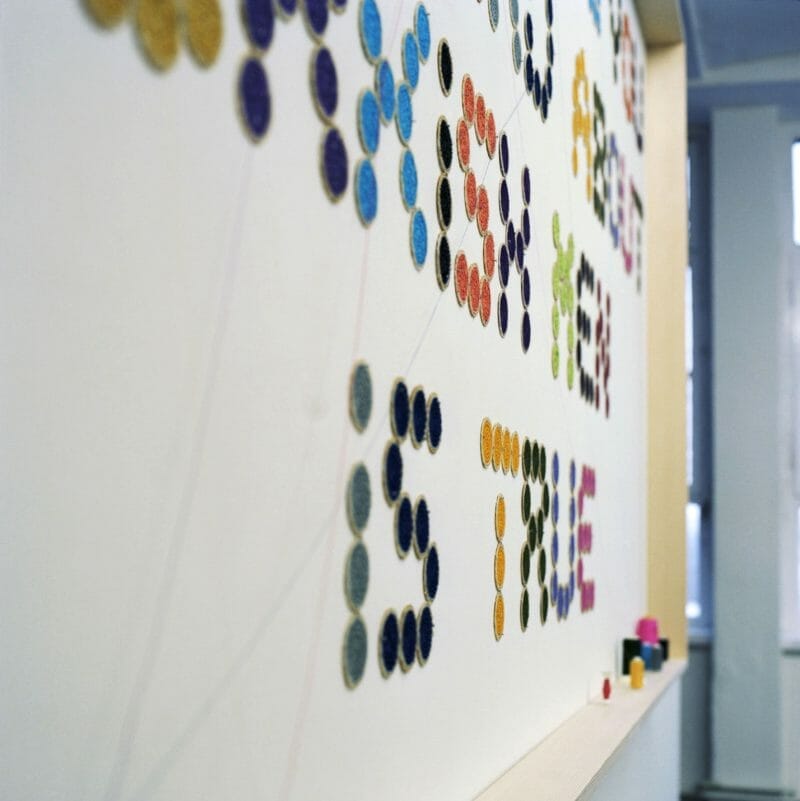
What kind of research characterizes your production? What mainly influences your imagination and your artistic practice?
I think research is a big part of my artistic production. For some artist even more, there is a lot of research-based art around. For some artists there is much less. I think I am kind of in-between. I have this natural instinct to connect and understand the subject. But I don’t want to create something literally based on that research. If it is possible, I like to develop new ideas, new perspectives and my personal approach to a subject.
A lot of things can trigger imagination for me. Something very visible, standing in front of everyone for instance. Sometimes a little story, sometimes a stunning landscape. An artist’s mind is like a notebook, it collects this little dots of information and it will keep on rendering till they are ready to use as a final product.
What is the link between your artistic practice and the territory and culture of your land? How biographical is your work?
I don’t associate myself with any geography or any particular culture anymore. I am just a guest and I am hosted by wonderful people around the world. I moved physically and mentally between cultures. On the way I have collected what I liked and hopefully made myself a better man. Of course I will always carry something with me from my childhood, from where I came from. Only I can visit those things that interest me from the past.
However my works are very biographical. Even though I also enjoy anonymous art. That kind of art you can’t really see the artist behind it or that is very abstract. I always try to put myself in the works. I enjoy that kind of honest connection of art and artist. I think this kind of choices come naturally. I could never escape from making biographical art. Life and art will always walks hand-to-hand.
Mapping Refugee Camps is a series of works you started during the pandemic. How did this project come about and what is it about? Do you see it as a kind of work in progress or is it a series you consider finished?
Art is a very organic process. Mapping refugee camps didn’t come to me suddenly in one day. I have been working with mapping ideas for 10 years. Maybe the first work of the series “This is My Island” in 2013 was more intuitive. It was a map made from Keffiyeh used in Middle East but the map wasn’t showing the Middle East. From there on, I develop this idea of “Non geographical Maps” they were questioning how maps are drawn, what is the exact meaning of land or borders. Soon I discovered that all maps are wrong, they are not made for people but to divide them.
After producing many works from this series, I realized it was the same for refugee camps: a “non-place” “limbo” “no geography”. They existed in reality. But officially they were temporary settlements; they don’t have the statute of being towns or villages. Even though some of them have existed for many years. People who live there won’t be recognized as citizens of the country where the camps were situated.
For this series I used what is called “immigrant bags” people usually carry those bags when they are on the move. I have made so far 3 from the series. But I don’t think I finished with this series.
What is the significance and function of the textile medium in your research? When did you start including textiles in your work?
Textile, craft, crochet have a long history in my work. I used them differently for different works. Early crochet works were conceptual works; playing with language, crochet is a repetitive and long activity. For the mapping series, I used each time different types of textiles. Textiles with interesting stories behind them. Textiles which represent a group of people, which have an historic significance. For instance the textile I used for “Road Kill” in 2019 comes from South Africa. It is called shwe-shwe. Just looking at the history of this textile you can also see the history of colonialism. How also cultures have been altered by colonialism. A western design textile defines culture in other geographies. Similar story with “Vlisco” that are Dutch company products and design but known as African material. It has become a big part of the culture. For those reasons mapping and textiles overlapped for me.
Soft Landing is the work created during the 2019 International Artists Residency Program in Istanbul, in collaboration with local artisans who make traditional Turkish quilts and embroidery. Can you tell us more about this work and the whole project? More generally, what was the impact on your personal and professional path of the many artist residencies you have taken part in?
It was a very interesting and fun project. It was organized by Istanbul Modern Museum. A group of international artists are invited to Istanbul and they are connected with local crafts people to develop works. Istanbul has a very long history and excellent craftsmanship. I chose the work with a Turkish quilt maker. Traditional Turkish quilts made from satin. It is one of the traditions almost dying. I also researched the history of the city and the work of a very famous Turkish sailor/cartographer Piri Reis. I produced works combining quilt making and mapping in style of 14th century with a modern twist. Cartography produced that time used a lot of images, instead of graphics. Not only the locations but also some stories depicted on them. That is how “Soft Landing” 2020 was made. There were also several ladies embroidering the images I had drawn with silk on Satin.
I really enjoy residencies. I think it is a great way to understand the cultures around the world. It also suits the type of work that I do. You will get a chance to spend some time in a different country, talk with people and produce something together. It is not only about artwork but also about the entire experience of connecting with people in different geographies. I also learned a lot from the experience. My Residency in Johannesburg had a big impact on my work. I could never totally understand the scale and depth of Colonialism without being there.
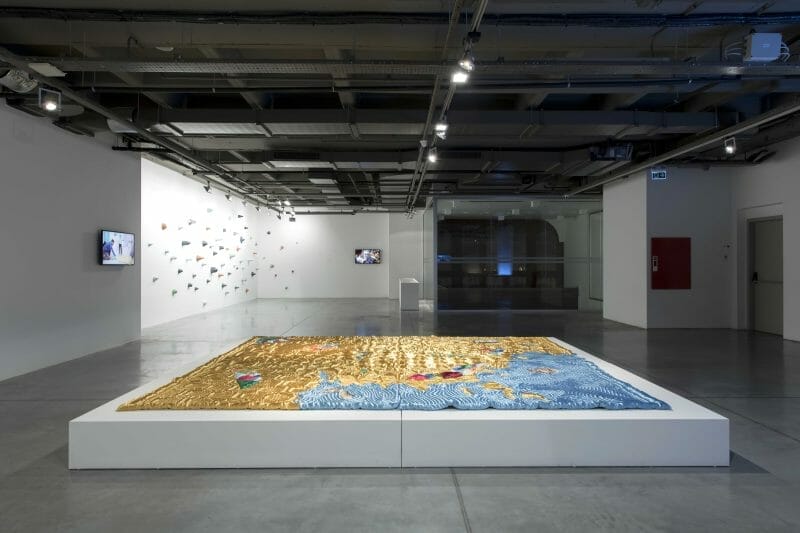
Are there any contemporary artists that you feel are close to your research and language?
I enjoy art and follow many artists. But it was strange for me when I was studying art, everything was very westernized and Americanized (still is). Someone who comes from a different background and different culture finds it sometimes very difficult to relate. For instance, I can really esthetically enjoy the work of Richard Serra but I can’t connect totally. I do not come from an industrialized country. I come from a rural area, I don’t use steel in my work. There is a certain western esthetic that is actually accepted as “good”, anything else is dismissed.
I was really looking for artists not coming from the west. Then I discovered artists like Helio Oiticica, Lygia Clark and David Madella. They were aware of Western art and they worked in USA/ Europe. But they tried to bring something from their cultures. That was very encouraging for a young artist like me.
Is there an aspect of your work that has not yet been told? Is there a question that you have not yet been asked that you consider important in describing you and your art?
I have been practicing art almost 25 years now. I have produced many works during that time. Sometimes my perspective or my interests changed. However I can see the connections and where the works come from. I hope people also can look at my body of work as much as each work individually.

